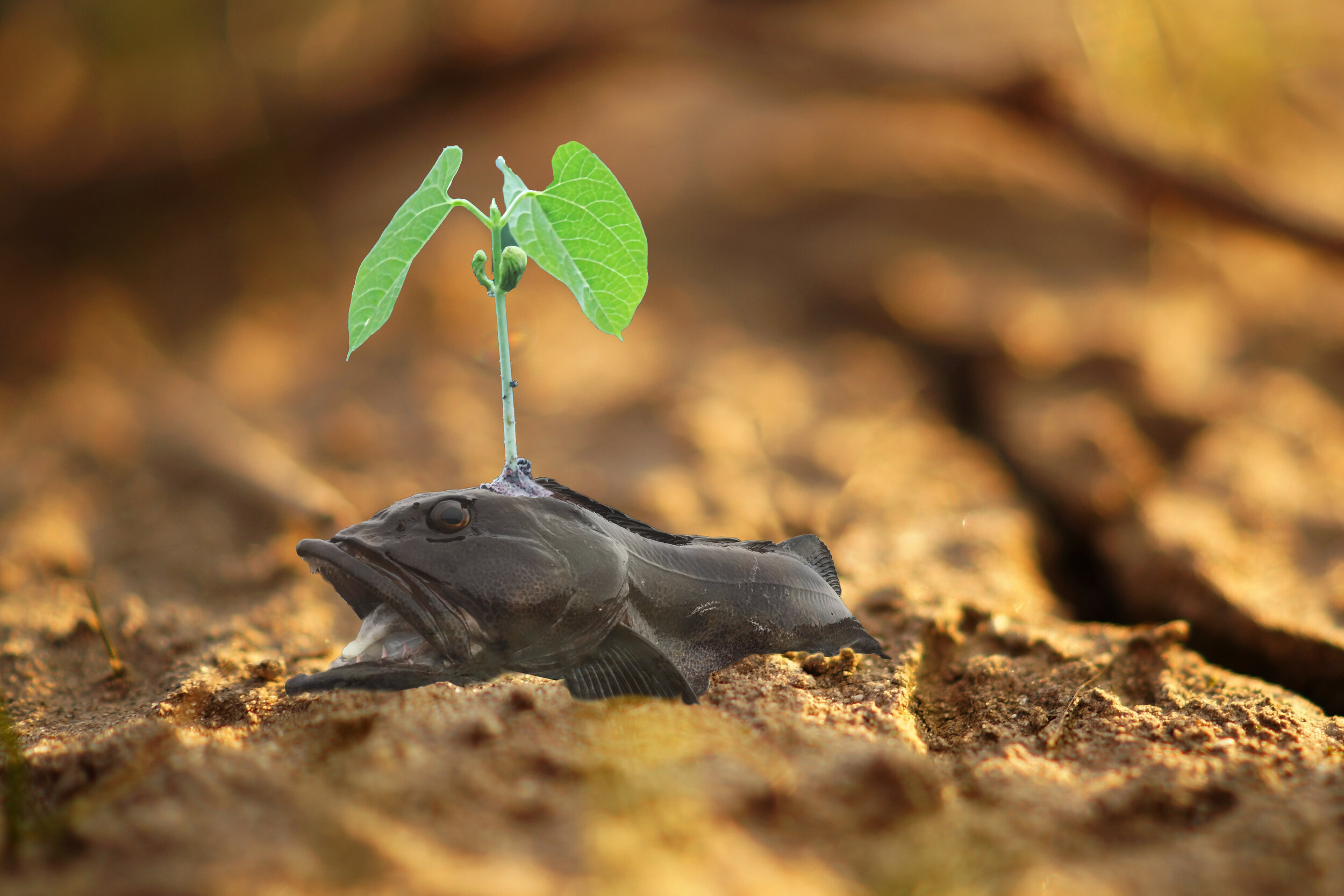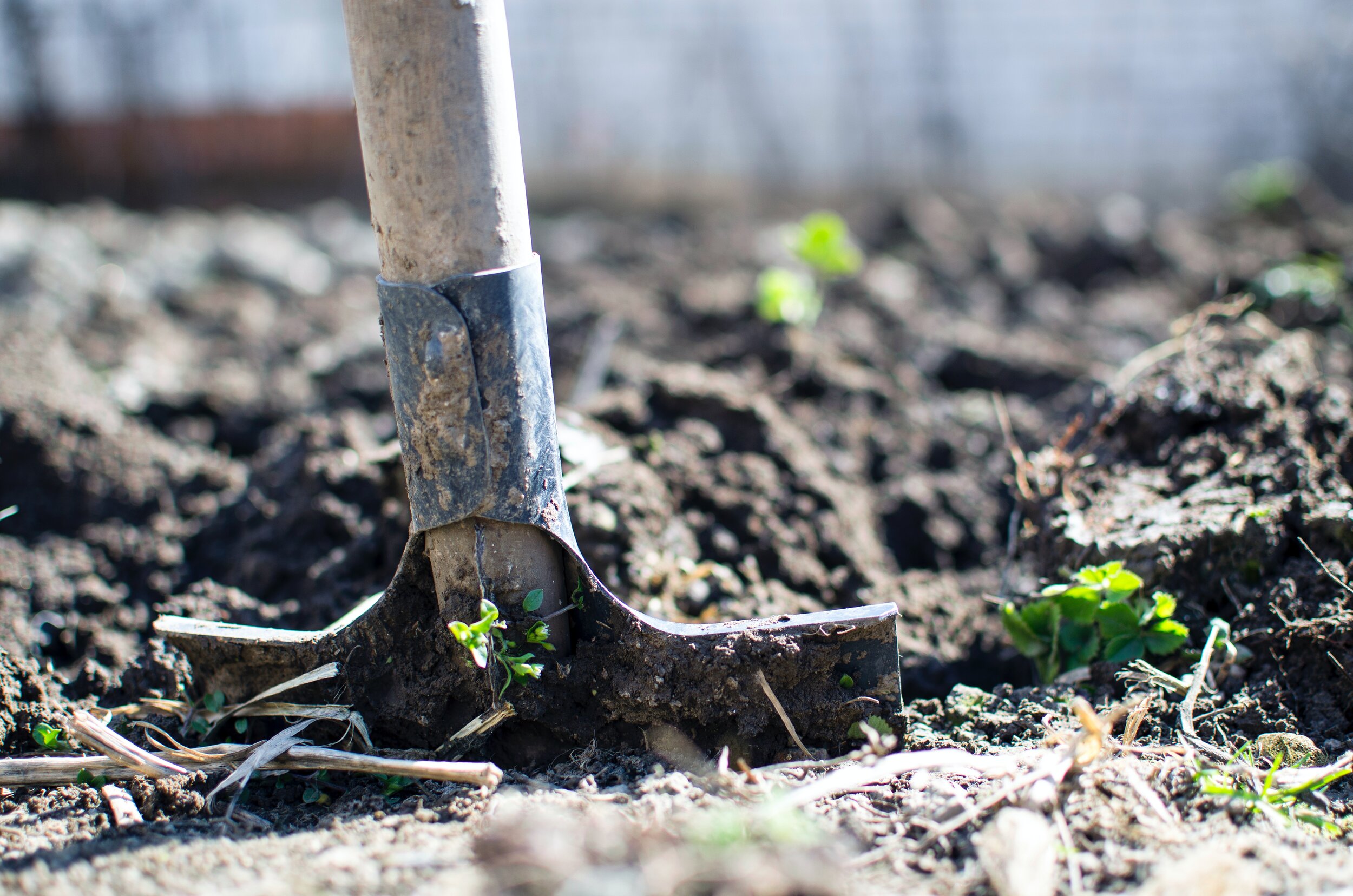Gardening with Fish
An Interview with Clayton J. Scicluna - Soil Ecology Specialist Via the Rodale Institute
Clayton started at UCSC’s farm and garden. Currently, he is an ambassador of the Rodale Institute as a soil ecology specialist and loves to get nerdy when it comes to gardening and soil. In our case, we’re grateful he was willing to help! Using the entire fish is not a common practice and we hope to help make it a little bit easier. In this case, using fish as fertilizer, you’re not only being more environmentally conscious, you’re improving your green thumb as well!
Assuming we have some aspiring gardeners reading this, what advice would you give them as they get started in their garden?
Be patient. Don’t forget to water. Let your plants dry down in between waterings. Don't over think things; plants are simple and resilient. Look at your plants every day. The best thing you can give your plants is your own shadow!
What are your favorite resources for learning about various climates and what plants grow well there during which seasons?
The school of YouTube is always a good one.
Books to Read:
John Jeavons, How to Grow More Vegetables in Less Space than You Thought Possible
Bill Mollison, Guide to Permacutlure
Paul Stamets, Mycelium Running
Robin Wall Kimmerer, Braiding SweetgrassWe encourage fishermen to not waste any part of their fish; the most commonly wasted part of a fish are the innards, head and bones. In what ways can fish be utilized for gardening?
You can make fish hydrolysate garden fertilizer, soil inoculant and animal protein/biotic. I will list the step by step process at the end of this article.
For those that don’t have naturally rich soil, what are the best soils to pick up at a local store for a raised bed garden?
Pick up organic compost from your local gardening store or recycling facility and then add 1 part fresh worm castings (vermicompost) to that to bring it back to life. Add 30% compost/vermicompost to your potting soil for the highest quality soil.
Do you use fertilizer right away when starting a new garden?
Yes - as a base with trace minerals and compost. Trace minerals are in kelp but you can never put too much calcium in the soil. Dimond K is a good one. There’s another product called Mineral Love. Compost and calcium/trace minerals will get your soil going for planting, and once the plants are 4”-6” tall you feed them with kelp and fish hydrosolate. There are good top dress fertilizers also. Keep your numbers low like 4-4-4 or 3-3-3, and less is more when using fertilizers.
When can you tell that you should use fertilizer in your garden vs. stop using it?
You can always tell if a plant needs fish and kelp if the leaves are turning yellow. If you are using too much the tips of the leaves sometimes turn brown. Some people use 1 oz of fish and kelp per gallon of water, 2-3 times per month. It varies by what you are growing, but that is a good rule of thumb . Also, you can feed a plant via its foliage (leaves), but it is ideal to feed the microbes in the soil, and then the soil feeds the plant.
What types of plants grow better with more fertilizer and with which plants should you use it sparingly?
Roses, hemp, tomatoes, peppers, corn, melons, and strawberries all love their fertilizer.
Greens, beans, perennials, shrubs, and herbs tend to use less.What other resources would you point us toward in addition to what you shared so far?
Occidental Arts and Ecology and Kiss the Ground are great. Paul Staments is a legend. Any permaculture book or club. Chris Trump on Korean Natural Farming. Michael Pollen; Vanda Shiva; Alice Waters; Michael Ableman; Dr. Elaine Ingham is my guru. Dave Jackie on permaculture. Grit Soil.
Making Fish Hydrolysate
Fish hydrolysate is an amazing product for promoting plant growth. It’s high in Nitrogen, can be naturally produced and it is a great food for microbes. Use it as straight fertilizer, animal supplement and an ingredient in compost teas.
Fish hydrolysate is composed of fish and glucose based sugars, and uses lacto bacillus to break everything down using natural enzymes. Fish hydrolysate does not undergo the heating and skimming process that you get with fish emulsion products. Heating breaks down beneficial amino acid chains and this cold process also retains the fats and oils that microbes love.
How to make it fish Hydrolysate
1. Get some fish: You might as well use fish discards like fish heads, inedible guts, etc. We use whole fish as there are naturally wider range of nutrients present.
2. Cut fish into chunks: Cut fish into chunks then either blend or run through a meat mincer. The finer the fish bits, the more effective the fermentation.
3. Add water: Add 3 parts water to 1 part ferment material. (1 liter fish mince: 3 liter water) ALWAYS USE NON-CHLORINATED WATER (i.e. don’t use tap water), Chlorine kills the bacteria you need to make the fertilizer .
4. Add sugars 3:1: Sugarcane molasses or raw (unrefined / unbleached) sugar is good. 750g fish : 250g Sugarcane Molasses.
5. Add lacto bacilli to blended fish mixture: Approx. 2 tbsp per liter. You can use liquid from a lacto ferment such as kimchi or sauerkraut.
6. Ferment: Now you have liquefied fish, sugar, and lacto. Pour this mixture into a container to ferment. Cover with a cloth/ mesh to stop insects, etc. The process takes anywhere from 2 weeks to over a month. You know it is finished by the smell. During fermentation there is a pungent smell, but once completed there should be little more than a faint vinegar smell.
7. Transfer: Transfer the ferment into a smaller container.
8. Directions to use: Mix ½ tbsp per liter of water
Plants
· Use as a soil/root drench to feed annuals and perennials
· Use to Inoculate compost to boost beneficial fungal population.
· Use in compost teas to boost fungal growth, add Nitrogen. In compost teas use at ¼ strength for this application.



